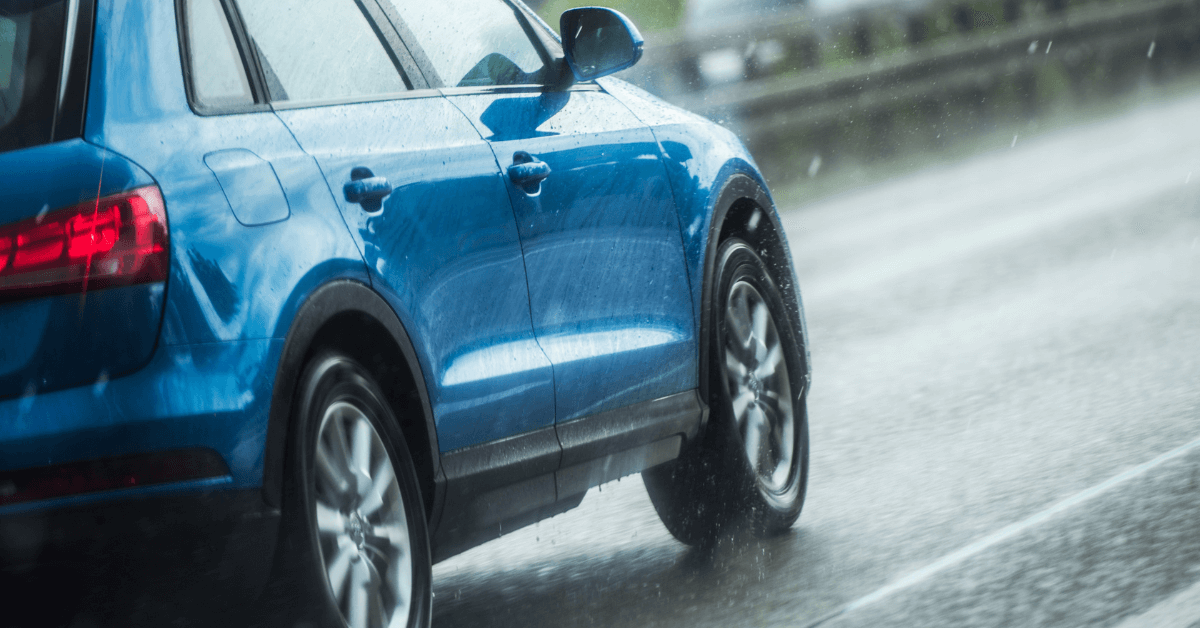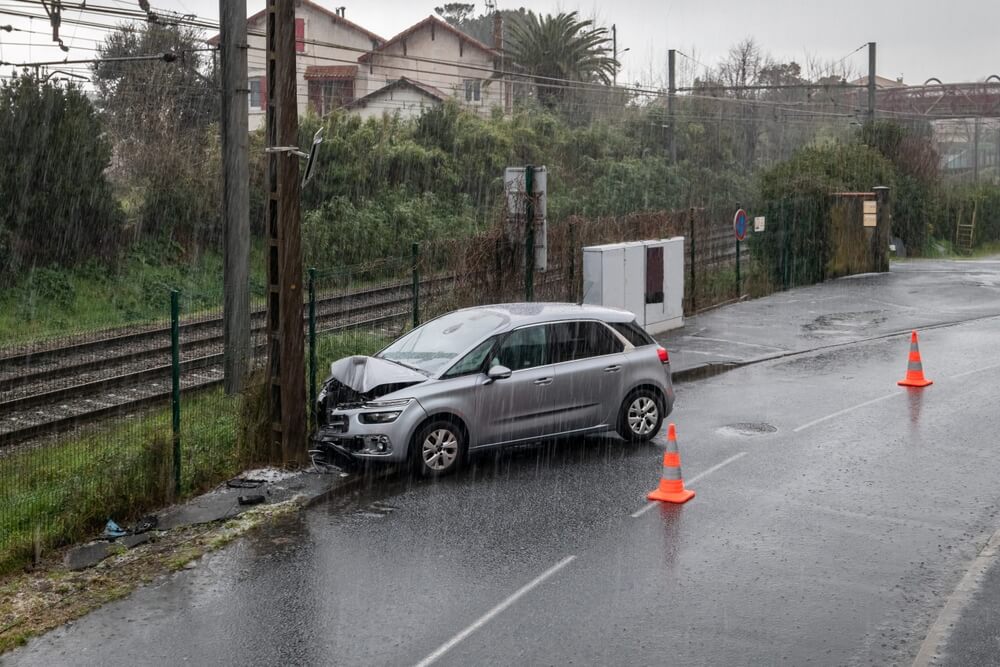
Partner at AKD Lawyers
Practice Areas: Personal Injury

Heavy rain can turn a regular drive into a serious challenge, especially in Louisiana. Sudden storms, flooded streets, and poor drainage make the roads risky for even the most experienced drivers. Wet pavement reduces traction, visibility drops, and hydroplaning becomes a real threat. Learning how to stay safe in these conditions can help prevent accidents and protect lives.
According to the U.S. Department of Transportation, nearly 1.2 million weather-related crashes happen every year, and 73% occur on wet pavement. Louisiana’s frequent downpours make awareness and preparation essential for anyone behind the wheel.
Understanding Louisiana’s Rain-Related Driving Risks
Rain changes how your car reacts to the road. Water mixes with oil and dirt, creating slick surfaces that make braking harder. Heavy rain also affects visibility and increases stopping distance.
In New Orleans, where flooding and poor drainage are common, standing water can appear quickly after a storm. Drivers who fail to slow down or use their headlights properly can create dangerous situations. Under Louisiana’s comparative fault law (La. Civ. Code Art. 2323), each driver’s actions are evaluated after an accident. Even if both parties contributed to the crash, fault is shared based on negligence.
A brief consultation with a car accident lawyer can help explain how Louisiana’s fault rules apply after a weather-related collision, especially when poor conditions make liability unclear.
Preparing Your Vehicle for Rain
Safe driving in heavy rain begins long before the first drop hits the windshield. Routine maintenance helps your car perform better in wet weather and reduces accident risks.
Check these areas regularly:
- Tires: Make sure tread depth is above 2/32 inches. Worn tires lose grip and increase hydroplaning risk.
- Windshield wipers: Replace them every 6–12 months. If they streak or skip, they’re no longer safe.
- Lights: Confirm all headlights, brake lights, and signals work properly. In Louisiana, using headlights while your wipers are on is required by law.
Properly inflated tires and functioning lights make a major difference when the rain starts pouring.
NHTSA Guidance: Hydroplaning can begin at speeds as low as 35 mph, especially when tires are worn or underinflated.
Safe Driving Techniques in Heavy Rain
Driving during a storm means shifting your focus from speed to control. Wet roads demand patience and smooth driving habits.
Follow these tips for safe driving in rain:
- Reduce speed and avoid sudden acceleration or braking.
- Leave at least five seconds of distance between your vehicle and the one ahead.
- Keep headlights on low beams to improve visibility.
- Turn off cruise control; it can cause loss of traction on wet surfaces.
Hydroplaning happens when a thin layer of water lifts your tires off the road. If this occurs, stay calm. Ease off the gas, steer gently in the direction you want to go, and avoid slamming the brakes.
“Nearly half of all weather-related crashes occur during active rainfall.” – U.S. Department of Transportation

Louisiana Law and Comparative Fault in Rain-Related Accidents
Louisiana’s laws make it clear that drivers must adapt to weather and road conditions. Failing to do so can be considered negligence. Even if a driver is only partially at fault, they can still recover damages, though the amount may be reduced based on their share of responsibility.
Louisiana Civil Code Article 2323: “In any action for damages, the degree or percentage of fault of all persons shall be determined, regardless of the nature of the conduct.”
This means that driving too fast for wet conditions, not using headlights, or having poor tire maintenance can affect how fault is assigned. Understanding this law helps drivers appreciate why careful behavior in bad weather is so important.
Rain-Related Crash Data and Safety Recommendations
The following data highlights key safety factors and recommended precautions when driving in rain:
|
Factor |
Risk Level |
Recommended Action |
Source |
| Rain-related crashes in Louisiana | High | Avoid driving during peak storms | FHWA / NHTSA |
| Hydroplaning risk speed | ~35 mph | Reduce speed, avoid puddles | NHTSA |
| Tread depth below 2/32” | Unsafe | Replace tires immediately | NHTSA |
| Safe following distance (rain) | 5+ seconds | Increase distance in wet conditions | AAA Foundation |
| Wiper lifespan | 6–12 months | Replace when streaking or skipping | NHTSA |
What To Do If You Experience Hydroplaning or a Rain-Related Incident
If you lose control during a storm, remember that remaining calm helps you regain traction. Ease off the gas pedal and gently steer in the direction you want to go. Avoid braking hard; that can make skidding worse.
If a crash occurs, move to a safe area if possible and call 911. Document the scene with photos or videos, note the weather conditions, and gather names of any witnesses. These details help investigators understand what happened.
Safety Update: Louisiana law requires headlights to be turned on when windshield wipers are in use, a key step for visibility and compliance during rain.
Frequently Asked Questions
Why are Louisiana roads so dangerous during heavy rain?
Older drainage systems and flat terrain cause water buildup, which reduces traction and visibility during storms.
How can I prevent hydroplaning while driving?
Drive under 35 mph in wet conditions, avoid sudden movements, and keep tires properly inflated and maintained.
What does Louisiana’s comparative fault law mean in a rain-related accident?
Fault is shared between drivers based on each person’s actions leading to the crash.
Are drivers legally required to use headlights in rain in Louisiana?
Yes. The law requires headlights whenever windshield wipers are in use for safety and visibility.
What evidence helps in a weather-related accident investigation?
Photos, weather reports, witness statements, and police reports help establish driving conditions.
How can drivers prepare before the rainy season in Louisiana?
Check wipers and tires, test all lights, and keep an emergency kit in your vehicle.
Conclusion
Driving in heavy rain across Louisiana requires preparation, patience, and awareness. Slowing down, maintaining your vehicle, and following Louisiana’s safety laws can prevent most rain-related crashes.
Even cautious drivers can face unexpected hazards caused by others or by flooding. Understanding your responsibilities and local laws keeps you protected on the road.
If you’ve been involved in a rain-related accident, Alvendia, Kelly & Demarest Law Firm can help you understand your options and protect your rights. Reach out today for a free consultation to discuss your situation.
Categories

In 2003, after being dissatisfied with the quality of legal care for victims of car accidents, Roderick ‘Rico’ Alvendia sought to establish a new firm focused on providing high-quality legal services to aid injured victims and their families. J. Bart Kelly, sharing Rico’s passion for upholding justice, joined the firm later that year, and established a partnership.







